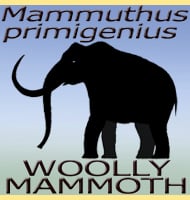Vintana
In Depth Vintana is a genus of gondwanatherian mamaml that lived in Madagascar during the Late Cretaceous, and was the first genus where skull fossils were discovered. Further Reading - First cranial remains of a gondwanatherian mammal reveal remarkable mosaicism. - Nature 515:512-517. - D. W. Krause, S. Hoffmann, J. R. Wible, E. C. Kirk, … Read more
